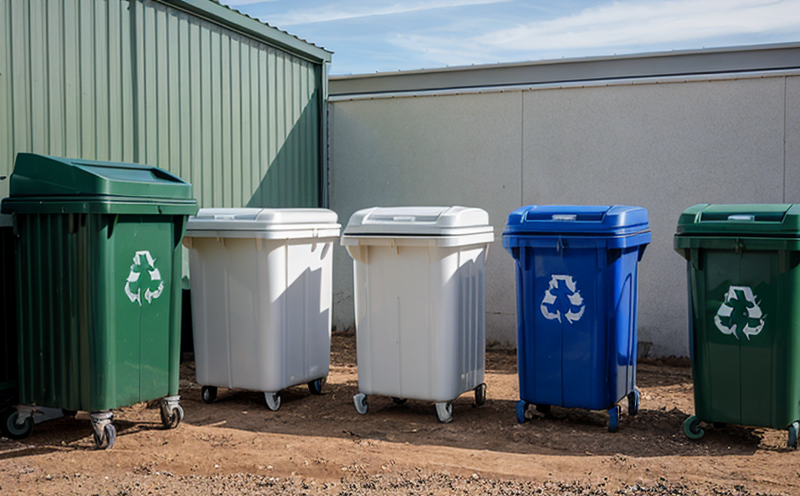ISO 15270-2 Recyclability Audit
The ISO 15270-2 standard is a critical tool in the sustainability toolkit for packaging manufacturers, recyclers, and waste management companies. This international standard provides a framework to assess the recyclability of packaging materials based on their composition and design. By ensuring that packaging meets these criteria, organizations can contribute significantly to reducing waste, conserving resources, and promoting circular economy principles.
The audit process involves several key steps: initial screening, material analysis, and final evaluation. Initial screening identifies potential recyclable components through visual inspection and basic tests. Material analysis then delves deeper into the chemical composition of these materials using analytical techniques such as Fourier Transform Infrared Spectroscopy (FTIR) and X-ray Fluorescence (XRF). The final evaluation combines this data with lifecycle assessment metrics to determine overall recyclability.
The audit not only evaluates individual components but also considers how they interact within the packaging system. This holistic approach ensures that even if a material is technically recyclable, its practical application in real-world recycling streams must be considered. For instance, certain plastics may have excellent recyclability characteristics individually, but when mixed with other materials, their performance can degrade significantly.
The results of this audit are documented comprehensively and provide actionable insights for improvements. These reports serve as a roadmap for manufacturers to optimize their products' design for better recycling outcomes. They also offer valuable data points for regulatory compliance and market positioning in growing sustainability-driven sectors.
| Step | Description | Tools Used |
|---|---|---|
| Initial Screening | Visual inspection and basic tests to identify potential recyclable components. | Magnetic separators, metal detectors |
| Material Analysis | Chemical analysis of the materials using advanced spectroscopy techniques. | FTIR Spectrometer, XRF Analyzer |
| Final Evaluation | Integration of chemical data with lifecycle assessment metrics to determine overall recyclability. | Data Analysis Software |
Benefits
The benefits of implementing an ISO 15270-2 Recyclability Audit extend beyond environmental sustainability. For quality managers and compliance officers, this audit ensures that their products align with the latest standards and regulations, reducing the risk of non-compliance penalties. R&D engineers gain valuable insights into material compatibility, which can drive innovation in sustainable packaging solutions.
For procurement teams, understanding recyclability helps in selecting suppliers who adhere to sustainability best practices, thereby enhancing brand reputation and market competitiveness. By incorporating these audits into their product development processes, companies not only meet but exceed expectations set by consumers and stakeholders committed to a greener future.
Industry Applications
- Plastic packaging manufacturers aiming to enhance the recyclability of their products.
- Paper and cardboard producers seeking to improve their materials' compatibility in recycling streams.
- Manufacturers of composite materials looking to optimize designs for better recyclability.
The industry applications are diverse, covering various sectors including consumer goods, pharmaceuticals, electronics, and retail. Each application area benefits from the audit's ability to tailor solutions that enhance recycling efficiency while maintaining product integrity.
Use Cases and Application Examples
In practice, an ISO 15270-2 Recyclability Audit has been successfully implemented by several leading companies. For instance, a major beverage manufacturer used the audit to redesign its PET bottles for improved recyclability. The audit revealed that certain colorants could interfere with recycling processes; this insight led to changes in formulation which enhanced overall recovery rates.
Similarly, a electronics firm applied the audit to its packaging solutions, discovering that certain adhesives were not only non-recyclable but also posed risks during incineration. By replacing these adhesives with more sustainable alternatives, they reduced waste and improved resource conservation.





